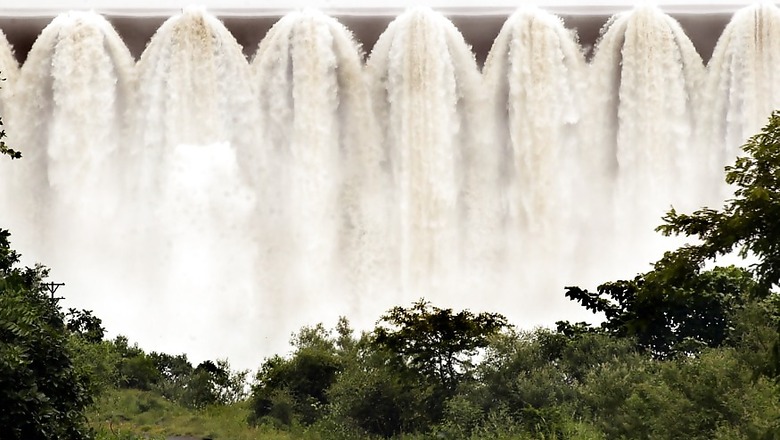
views
New Delhi: Prime Minister Narendra Modi on Sunday dedicated to the nation the Sardar Sarovar Dam, almost 56 years after its foundation stone was laid. Modi, who turned 67, unveiled the plaque dedicating the dam to the nation, after performing a puja at the site in Kevadia in the Narmada district. Lakhs across three states — Madhya Pradesh, Maharashtra and Gujarat — are going to benefit from this ambitious project.
Here’s a look at some of the important facts about the Sardar Sarovar Dam on Narmada:
• The Sardar Sarovar Dam is the second largest in the world in terms of volume and size. It comes second to the Grand Coulee Dam in the United States, which is considered the largest going by its volume.
• The height of the dam was recently raised to 138.68 metres, and the storage capacity to 4.73 million acre feet of water.
• The dam is expected to provide water to over 9,000 villages.
• The dam is located in Kevadia, Gujarat. However, 57% of the electricity generated from this dam would go to Maharashtra, 27% to Madhya Pradesh and the rest to Gujarat. Rajasthan is also expected to get some benefits in terms of irrigation and water supply.
• During Sunday’s much-awaited inauguration ceremony, PM Modi will oversee opening of the 30 gates of this dam. The reservoir will be filled to its capacity.
• Each of these 30 gates weigh about 450 tonnes each and it takes about one hour to close them.
• India’s first Prime Minister, Jawaharlal Nehru started the project in 1961. Since then, it has taken 56 years and several regimes of different parties to complete the project.
• Medha Patkar-led Narmada Bachao Andolan took the government to the Supreme Court over environmental and rehabilitation issues, and obtained a stay on the construction in 1996.
• The apex court then allowed resumption of work in October 2000.
• The construction of the enormous dam took a toll on the surrounding villages and fertile plains. It managed to displace hundreds of villagers, inundated thousands of hectares of fertile land.




















Comments
0 comment